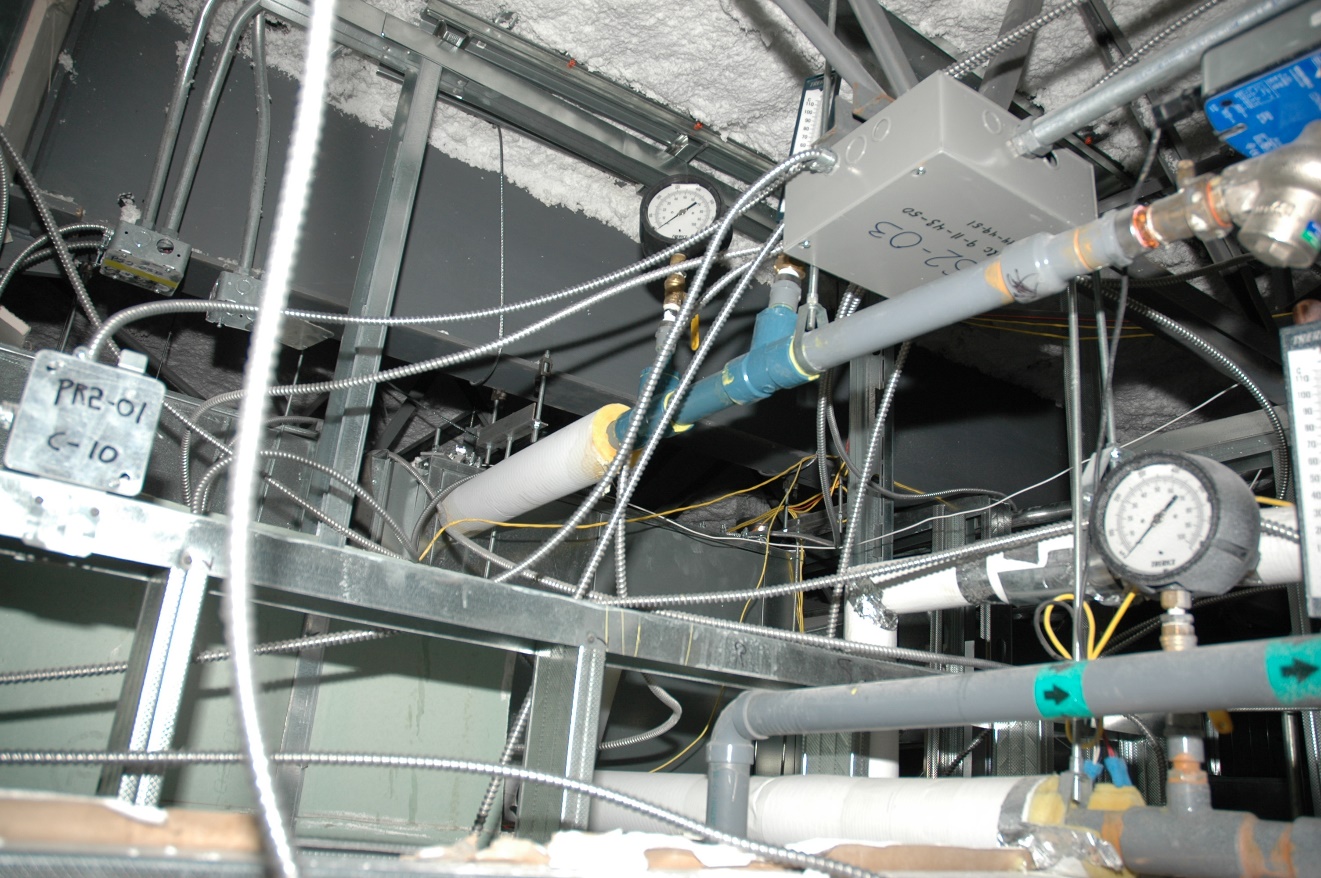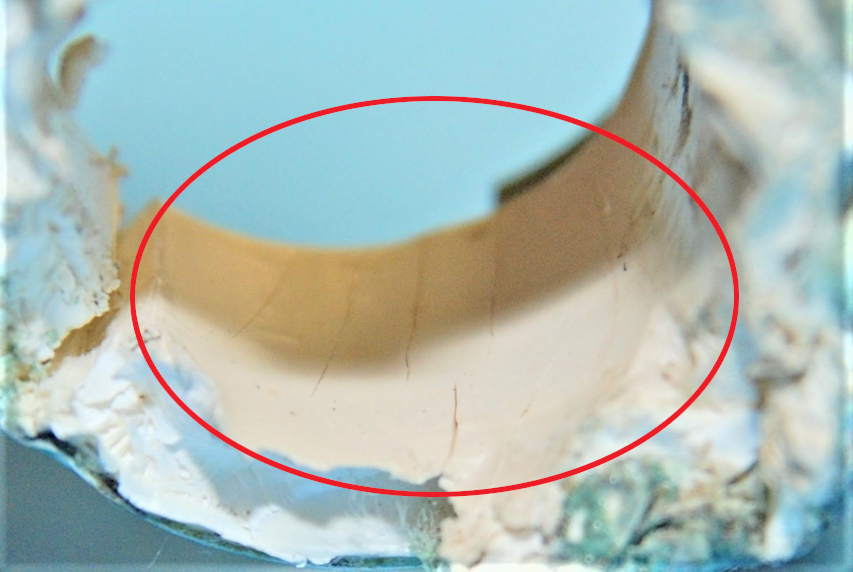LAVAL 1 800 361-0338
Lévis 1 866 835-5335
Contamination of polymer pipes: the importance of a good investigation
For several reasons, the use of polymer pipes is very common in both residential and commercial plumbing. Polymer pipes have a clear advantage over metal pipes (copper, cast iron, etc.) in terms of purchase cost and installation speed.
Chlorinated poly (vinyl chloride) [CPVC] is a polymer often used to connect either a fire protection system or heating, ventilation,and air conditioning (HVAC) equipment (photograph 1). Although there are benefits in using CPVC, this polymer can be susceptible to failures due to contamination from chemical compounds named Environmental Stress Cracking (ESC).

These compounds can be present in products commonly used in these pipes, such as cutting oils, mold inhibitors, sealants, and the list goes on. Even cooking vegetable oils can cause a failure on this type of pipe.
Since a failure can have several possible causes, it is important to identify it well when it occurs. Indeed, this failure is recognizable via multiple fractures that are observable on a part (photograph 2). A chemical analysis is necessary to identify the chemical compound (or class of compounds) responsible for this contamination. In order to do so, a competent professional, such as a chemist, will be able to decide on the appropriate method of analysis (FTIR, GC-MS, etc.). Once the contaminant is identified, the cause of its presence remains to be determined. Is it an installation error or a lack of information from the manufacturer? Moreover, it is possible that a contaminant was introduced after the installation during the pipe usage. Finally, a good expert in failures is an essential ally in this type of case to fully understand the cause of the failure.



